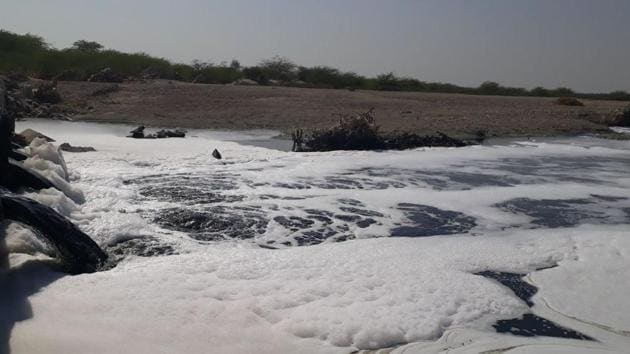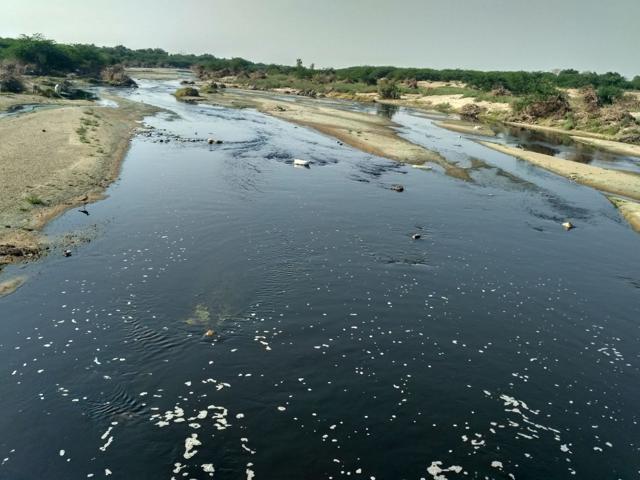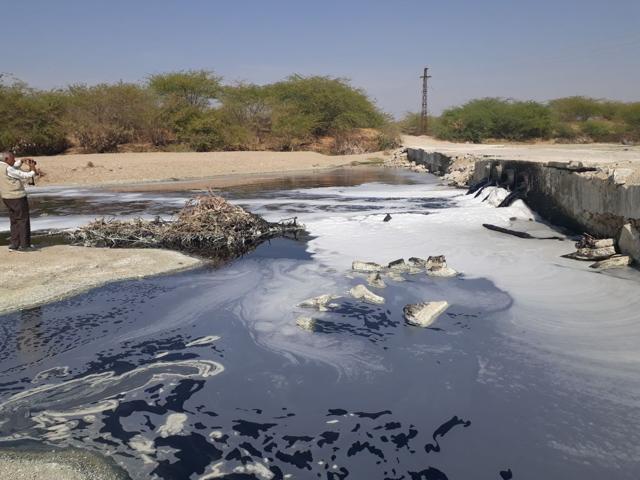Bandi river’s water unfit for agricultural and domestic purpose, says NGT monitoring committee
The river is so polluted that it has killed all the weeds along the banks.
A monitoring committee, appointed by the principal bench of National Green Tribunal, in its report has stated that industrial pollutants from textile units in Pali being discharged into Bandi river have magnified the level of pollution and made the water unfit for agricultural and domestic use.

The four-member committee — constituted by an NGT order dated May 26, 2017 — visited Pali, located 70 km south-east of Jodhpur, and inspected the Common Effluent Treatment Plants (CETPs) and the pollution level in Bandi river. The committee comprising Dr Brij Gopal, an aquatic ecologist and former professor of environmental science at Jawaharlal Nehru University; Dr Rakesh Kumar Sharma from IIT Jodhpur’s department of chemistry; P Jagan an officer from Central Pollution Control Board (CPCB), Bhopal; and the member secretary of Rajasthan State Pollution Control Board (RSPCB). The committee submitted its report to NGT on April 23, 2018.
In the report, the committee said that textile industries located on the bank of the river are the major and most important source of pollution to surface and groundwater. The report states that before the river enters Pali, the water quality is “very good without any trace of pollution from any visible source. It is only after the river enters Pali and crosses Mandia Road Industrial Area that it starts receiving pollutants from the industries.”

The report states the pollution level keeps increasing as it flows downstream from Pali. The stretch from 10 to 30 km downstream is “unbearable” and it is “affecting the vegetation in the nearby areas and the soil/gravels are highly coloured”. The colouration is attributed to the presence of sulphur compounds in the water. The report states that the use of sulphur-based dyes must be discouraged to minimise the sulphur compounds in the wastewater discharged from the industries.
The report found that the polluted river has killed all weed Prosopis juliflora (also known as vilayati babool) along the dam/river. The report said the downstream areas have also been badly affected by large sludge deposition and dark coloured soil.
The groundwater has also been affected as a result of an increase in total dissolved solids (TDS). While the TDS in generally unaffected areas was found to be between 400 to 1,600 milligrams per litre, in the industrial areas, it has increased to nearly 9000 milligrams per litre. “This has rendered the dam water unfit for irrigation and domestic use; even the textile industries cannot use it and have been forced to bring water from far distance areas,” the report stated.
The committee noted that Bandi is a seasonal river, which carries runoff water during the monsoon. Due to the discharge of industrial effluents in the water, the river carries only the industrial effluent and some amount of domestic sewage from the city.

The report said that as the river flows only in the monsoon, it is “unable to remove the pollutants completely and instead these pollutants are carried downstream up to Nehda reservoir and into the groundwater, affecting the people throughout the year”.
Stating that the pollution in the river has made its water unfit for agriculture and domestic purpose, the committee, in its report, said that “the only option available… is to treat the tertiary treated effluent through a suitable advanced treatment process for recovery and reuse of the water”.
Affected by the constant degradation of water quality over the years, the locals have been fighting a legal battle against the industry owners for the last 16 years.
The locals said that water contamination has been taking place for the last four decades. With chemical effluents of around 600 textile units entering the groundwater, farmers in the area can no longer use it for irrigation purposes. They say, over the years, their lands have become barren due to the water pollution.



